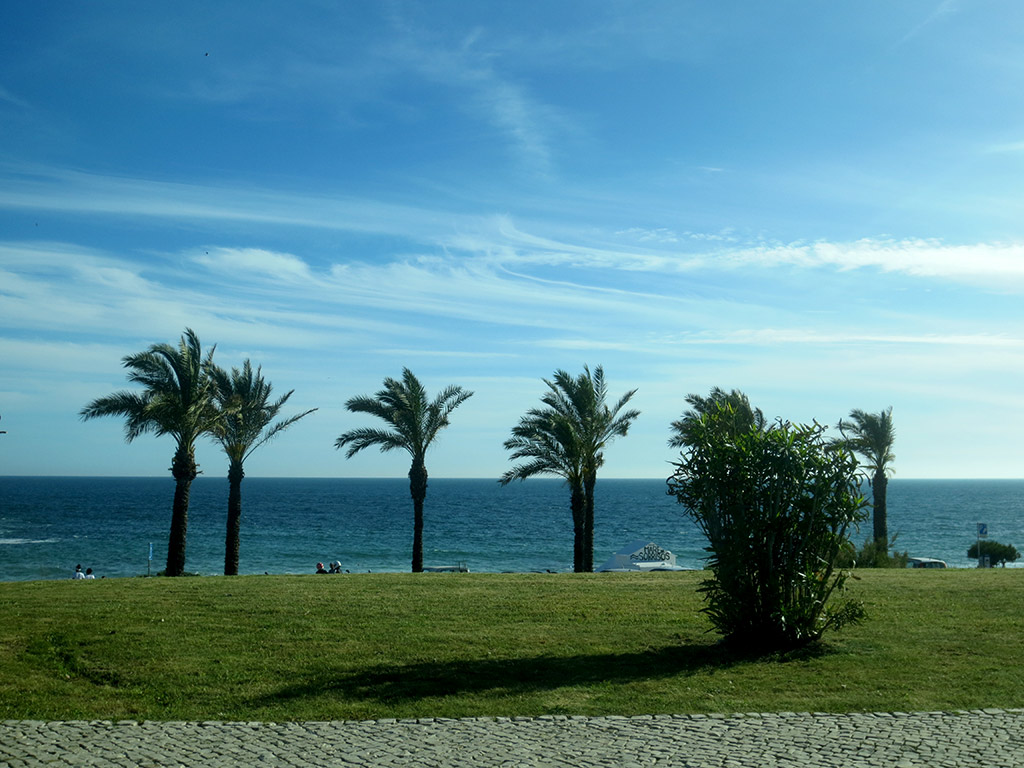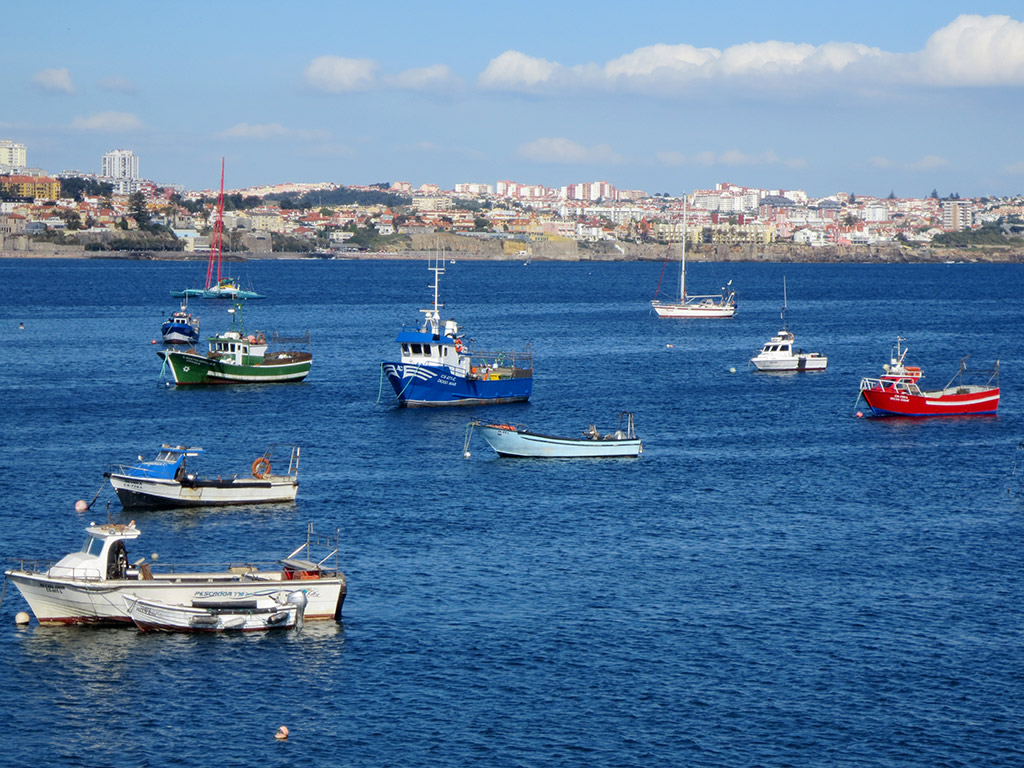Roughly 40 minutes west of Lisbon is Cabo da Roca, a rocky outcrop that forms the westernmost part of mainland Europe. (Ireland is conveniently not counted in this context, being considered an island.)
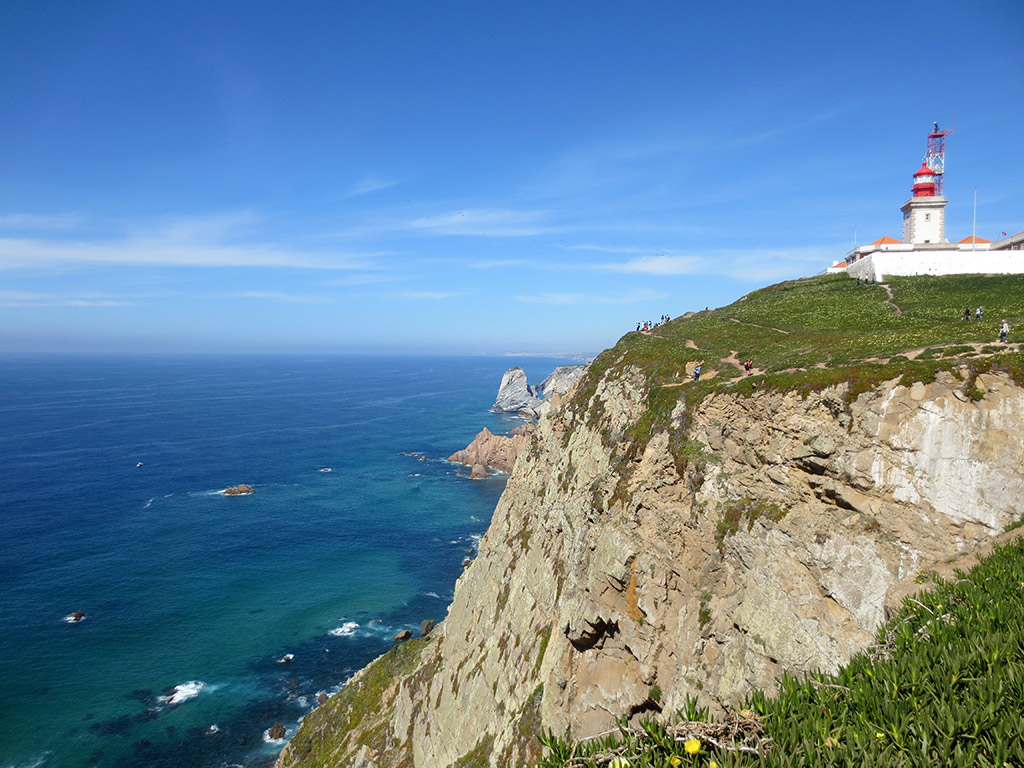
Somewhat reminiscent of Peggy’s Cove in Canada, the only signs of humans at Cabo da Roca are a lighthouse, a gift shop café, some stone monuments and a hundred or so fellow visitors.
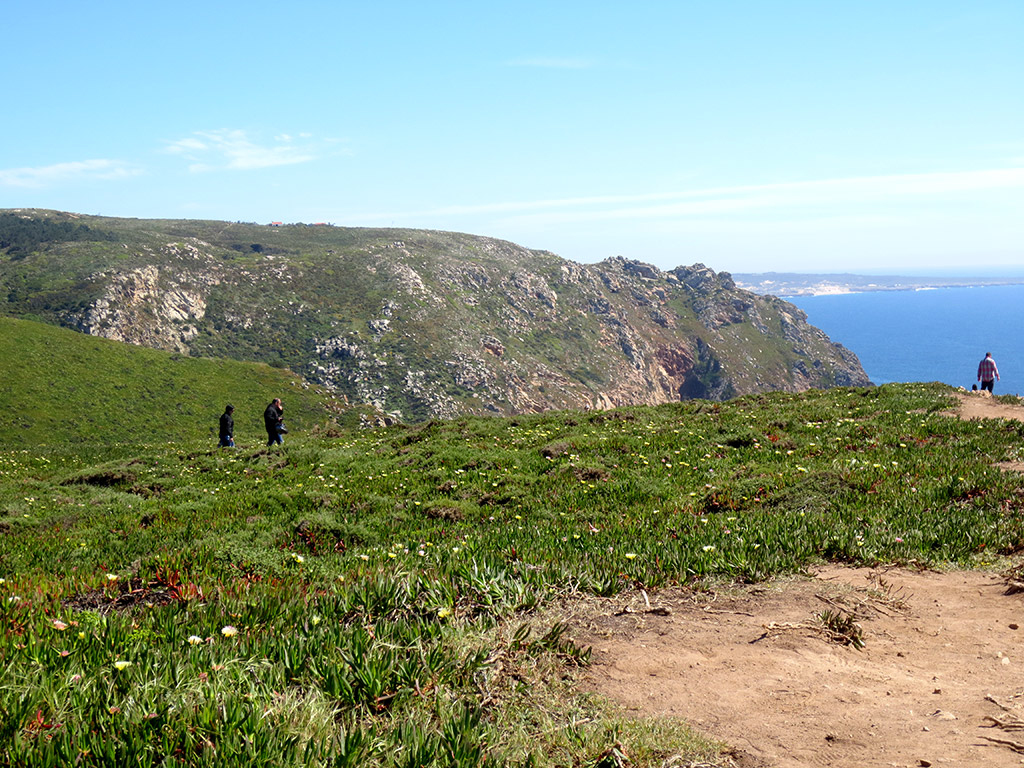
At this time of the year the grounds above the cliffs are covered in beautiful small flowering succulents, which I was disappointed to later learn are an invasive species imported from South Africa.
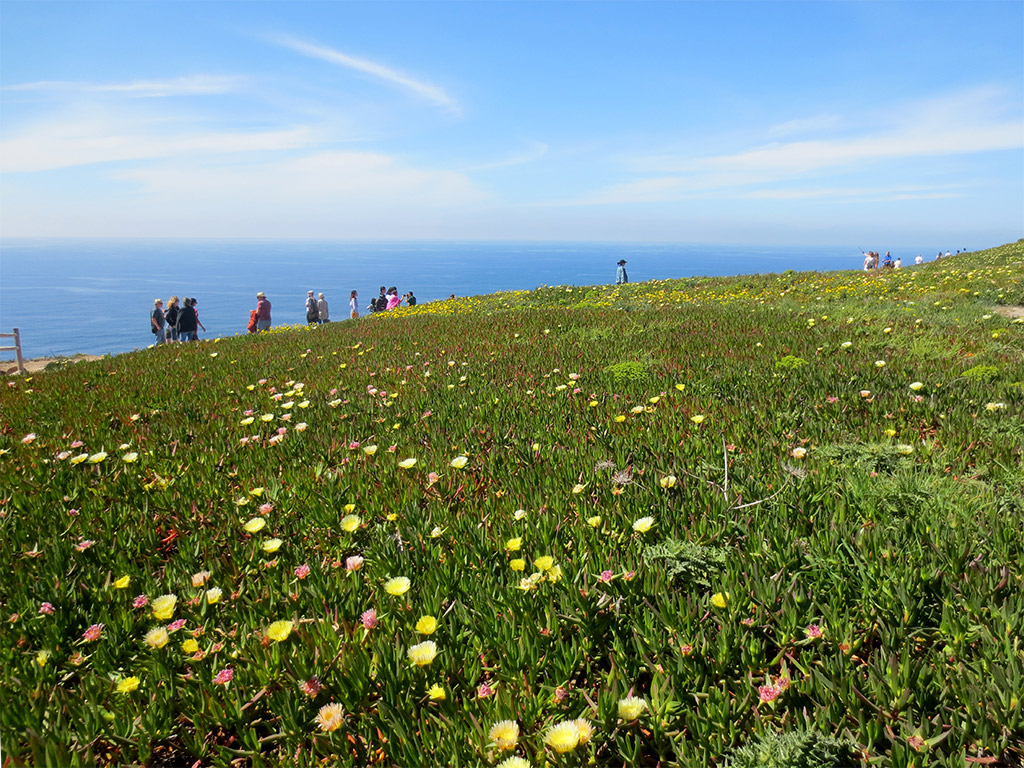
The views from Cabo da Roca are so extensive that it was used historically as the first lookout point for potential ocean invaders. An enemy armada could apparently be spotted 4 to 5 days before they would be able to reach Lisbon, meaning the city could never be taken by surprise.
Straight westward into the Atlantic — 3,386 miles away — await the majestic shores of New Jersey.
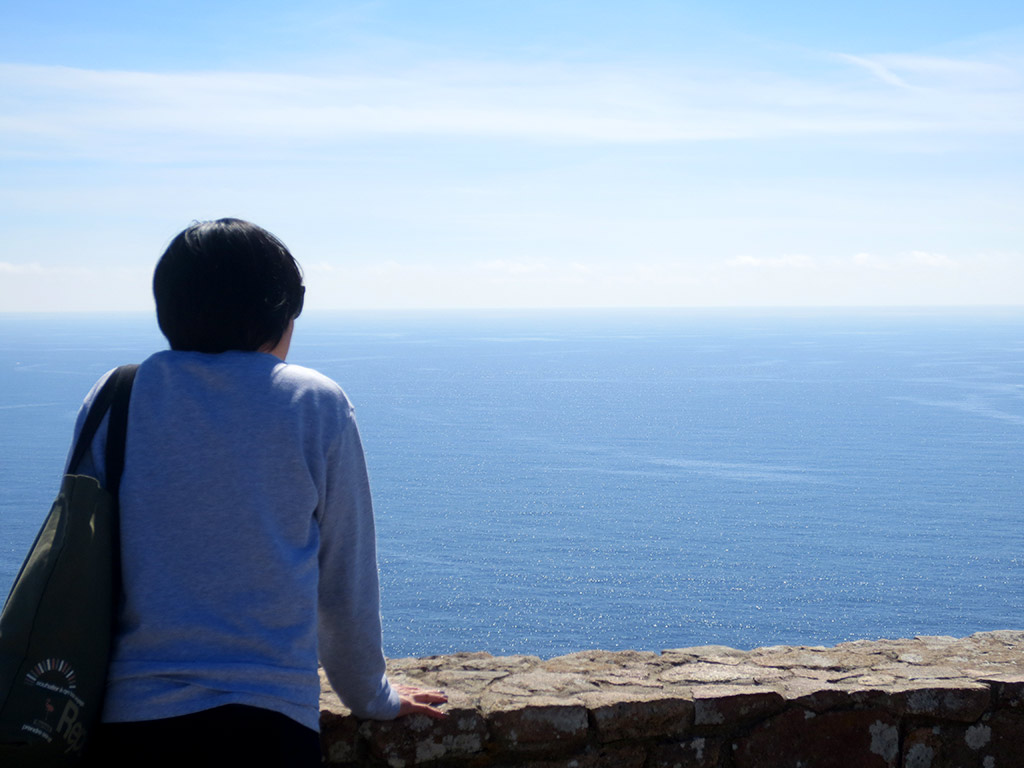
Like many tourist attractions in Portugal, the authorities generally deem visitors to be wise enough not to kill themselves, and provide only minimal barriers. That said, our guide pointed out that a number of people climb the fences every year seeking better views and tumble to their deaths.
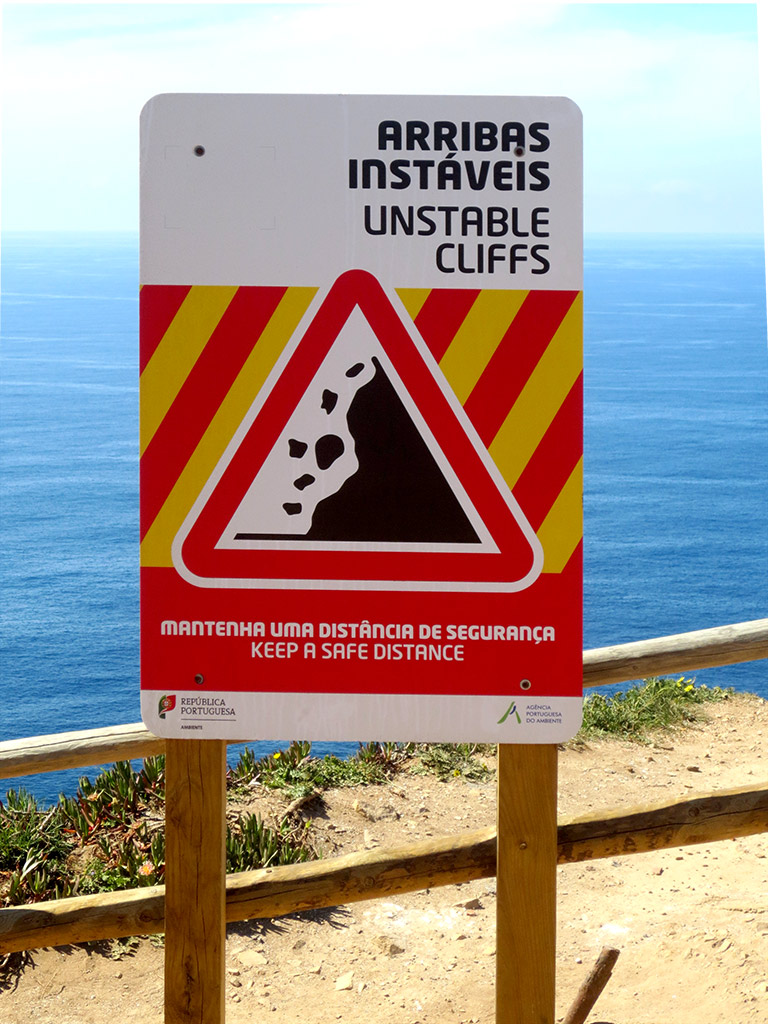
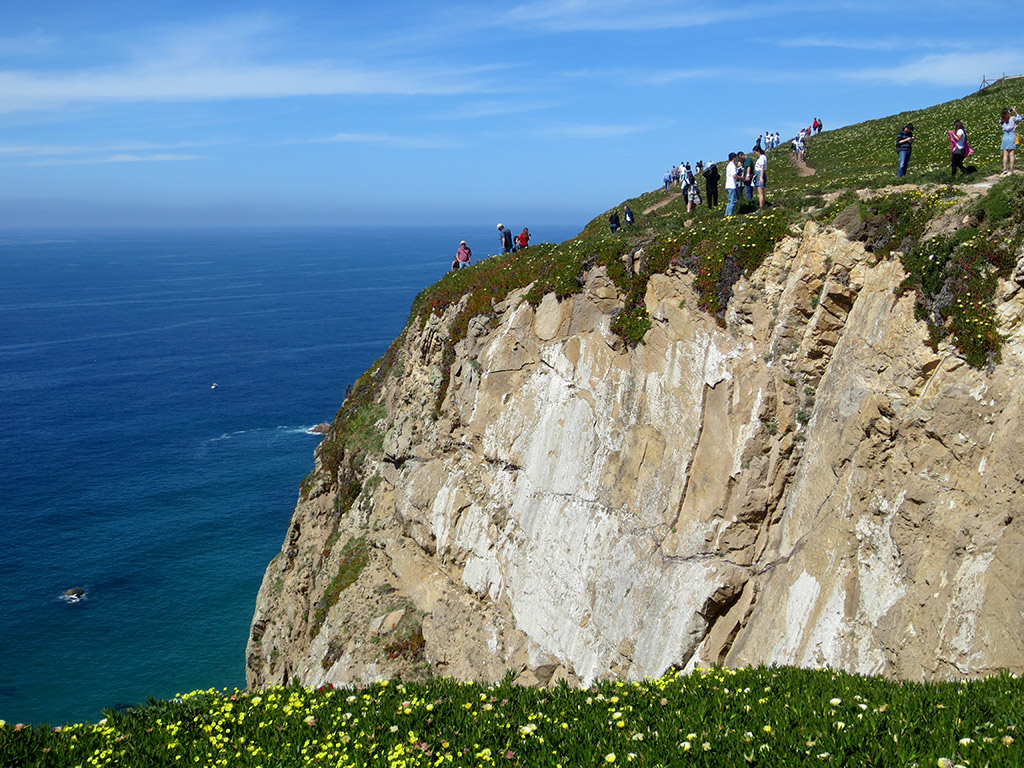
On the way home our guide stopped at another less busy point along the shoreline, where we had excellent views of fisherman and hardy beach-goers on the sands below.
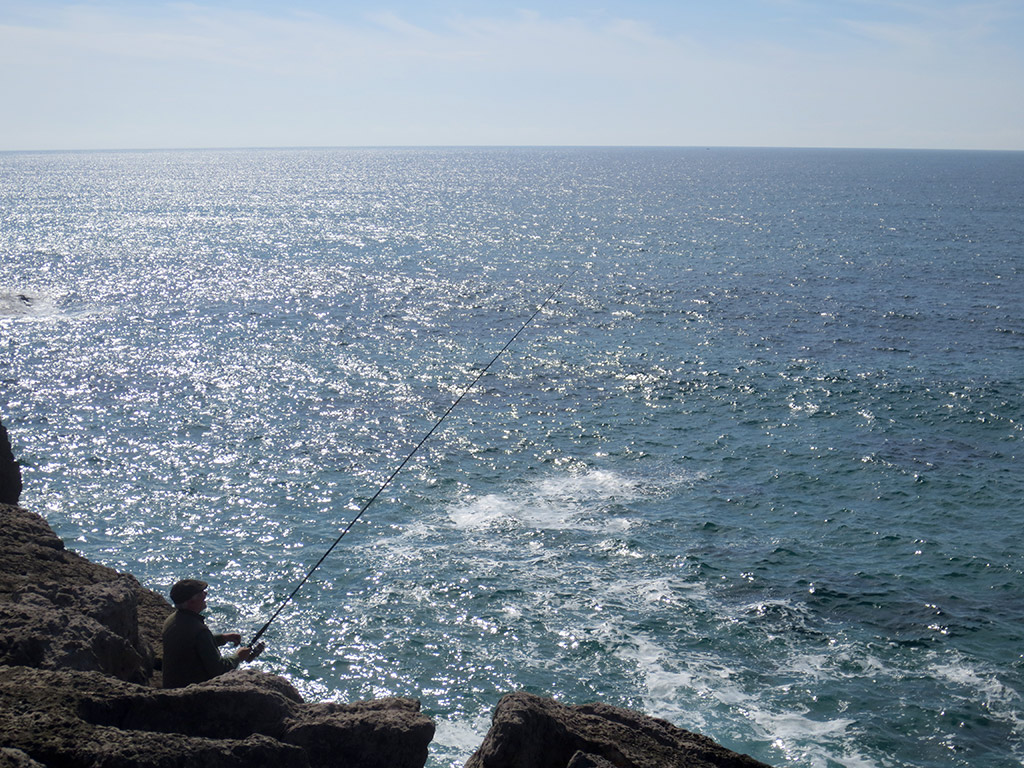
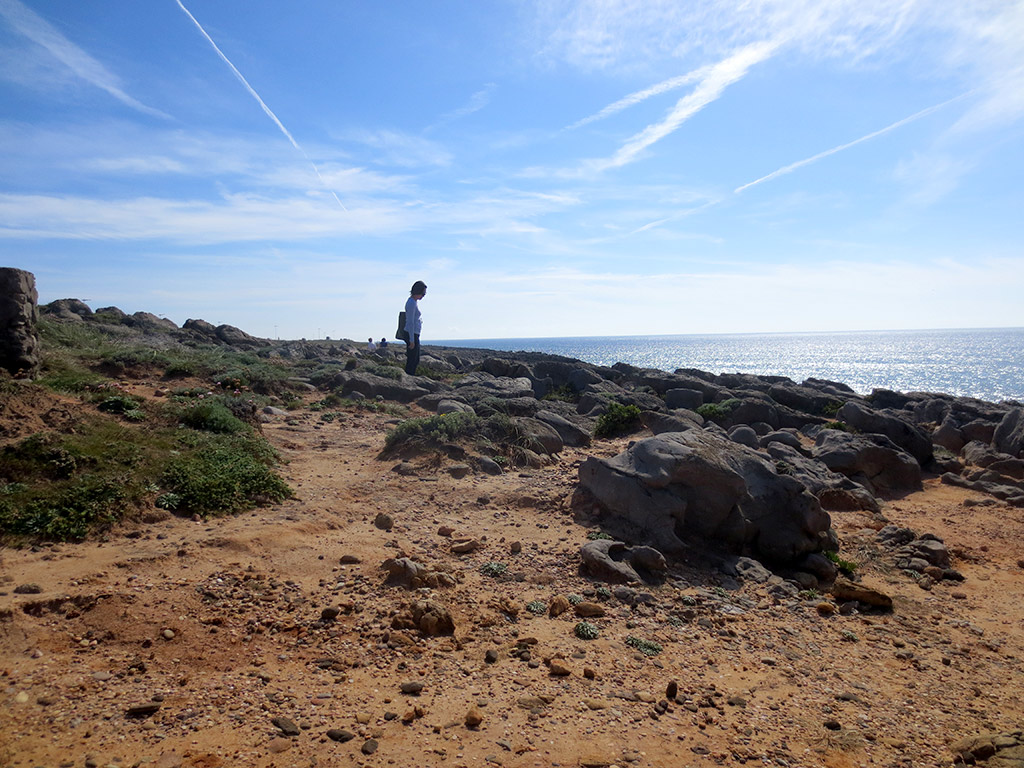
The route home followed the coastline, passing through the swanky resort towns of Cascais and Estoril.
